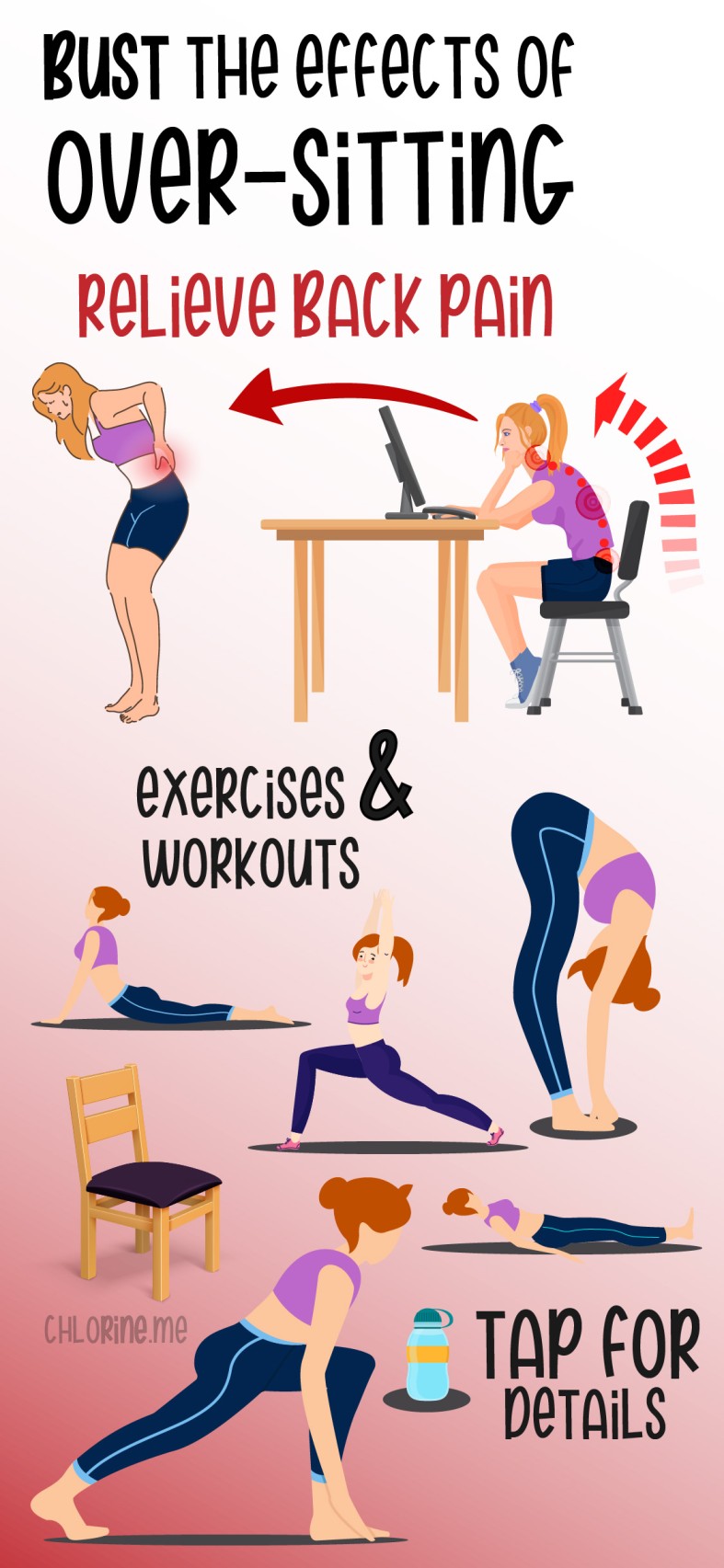Do you sit for hours in a day? If so, you guarantee back pain. While it’s okay to sit for an hour or two, sitting for too long followed by a routine that lacks adequate physical exertion will probably result in back pain. And once you have pain in the back, you should fix it before it becomes a pain in the A**.
I am saying this because it really has the potential to seriously harm your back and neck. And why you shouldn’t, when it’s so easy that it only takes 5 simple no-equipment exercises 20 seconds each to relieve the pain altogether.
There are 5 great stretches you can do to improve the flexibility and overall health of your back and neck. Let’s start with one of the most effective moves out there:
The Wall Stretch
- Find a wall in your house that you can put your weight on.
- Face the wall, and place both of your hands flat on it with your arms extended and slightly bent.
- Start to bend down and arch your back, pushing your butt out. Keep your legs sturdy and straight with a slight bend at the knee.
- As you push your butt out, push gently against the wall you’re leaning on.
- Push slowly as you arch your back and push your butt out, taking deep breaths as you do so.
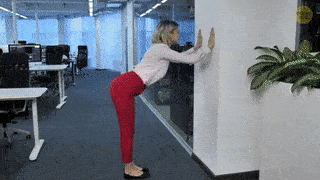
Feel that stretch in your lower back? That means you’re doing it right. Ahh, doesn’t that feel wonderful?
Why is this stretch so incredibly effective?
When it comes to relieving pressure on your lower back? It’s because when you sit in an office chair or on a couch, you compress your spine, especially closer to the bottom of your back. This compression causes stress on your muscles and nerves, causing aches in your lower back.
To decompress your spine, you need to stretch it out without straining it, which is exactly what this exercise does. It also stretches out your abdominal muscles, which are usually crunched together from long-term sitting.
The Pelvic Tilt
Here’s another stretch you can do at home to ease the pressure off your lumbar spine while also strengthening your core muscles — a key component in preventing lower back pain.
- Lie flat on the floor with your knees bent and the flats of your feet pressed against the floor. You can place your hands behind your head or have them relaxed by your sides.
- Tighten your abdominal muscles while gently pressing the small of your back into the floor (as if you were getting ready to do a sit-up).
- Hold this muscle contraction for 10 seconds. Repeat it up to 20 times or for as long as you feel comfortable. Don’t forget to breathe in and out as you do these.

This stretch engages your abdominal muscles, which is really important when relieving lower back pain. The stronger your core muscles are, the better they are at supporting your spine and keeping it strong, making it less likely to feel stress as it compresses in your everyday life. If you suffer from lower back pain, strengthening your core is an excellent way to remedy the situation.
Lumbar Extension Presses
Can’t get enough of those lower back stretches? Then you’ll love this move!
- Lie on your stomach with your palms flat on the floor on either side of your head.
- Slowly lift your upper torso off the floor while pushing off with your arms. Don’t forget to keep your pelvis and upper thighs pressed down against the floor.
- Lift your upper body as far as you can — ideally, you should be propped up from the stomach up, similar to a sphinx.
- Hold the lift for 10 seconds, and then slowly lower yourself back down.
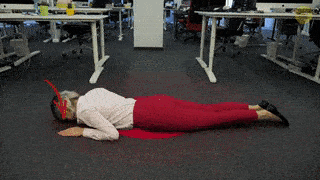
Do these 10 times. As you do them more, you can increase the hold for up to 30 seconds. Just do whatever you feel most comfortable with.
This lumbar extension press is particularly effective for people who suffer from disc herniation, which is often caused by excessive sitting. It stretches out the lower back in a direction that you can’t necessarily do standing up and can provide great relief to your lumbar spine. However, if you happen to have stenosis or fractures in your vertebrae, it’s best to consult your doctor before performing this stretch.
Behind-the-Back Neck Stretch
If you stare tensely at a computer screen for many hours at a time, this stretch can do wonders for your neck!
- Stand up with legs hip-width apart, and keep your arms down at your sides.
- Reach behind your back, and hold your left wrist with your right hand.
- With your right hand, pull the left arm gently, slowly pulling it away from your body.
- If you’re comfortable with this stretch, take it a step further by slowly lowering your right ear toward your shoulder. Hold this stretch for 30 seconds, and then do the same thing on the opposite side.
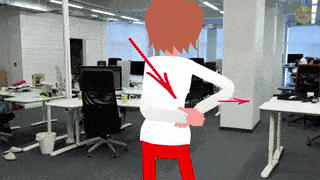
This stretch is wonderful for relieving tension in the sides of your neck as well as your upper back. If it’s hard for you to do at first, don’t be discouraged! You just have to work on your flexibility. Try doing this move every day. Over time, you’ll see that you’ll be able to do it with more and more ease.
The Seated Heart Opener
This stretch targets the front of the neck, chest, and shoulders — a triple whammy if you will.
- Sit with your knees and calves pressed on the floor, just like how little kids sit on the floor at story time!
- Lean back while placing your palms flat on the floor just behind you. Your fingertips should be pointing away from your body.
- Now begin to arch your back. Be sure to do this slowly as you push your hips into your heels. If you’re comfortable, bend your head back, stretching your neck and the front of your chest.
- Hold this pose for 30 seconds before returning to a relaxed posture.
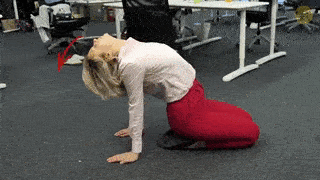
This stretch gives your neck a front stretch, which a lot of neck stretches fail to do. It should extend your neck’s flexibility a bit so that it doesn’t feel as tense throughout the day.
The fact that it stretches out your chest is great for taking deep breaths and finding a moment to relax in the day, especially if you spend most of your days hunched forward over a desk! If you can find just 10 minutes in your day to do these stretches, you’ll probably feel less stress on your lower and upper back and neck.
If you feel stiff at first, don’t worry! Over time, your flexibility should improve, and you’ll be able to perform them more easily. However, if you feel any kind of sharp pain or discomfort, consult a doctor or physical therapist to make sure you don’t have any underlying problems you don’t know about.
